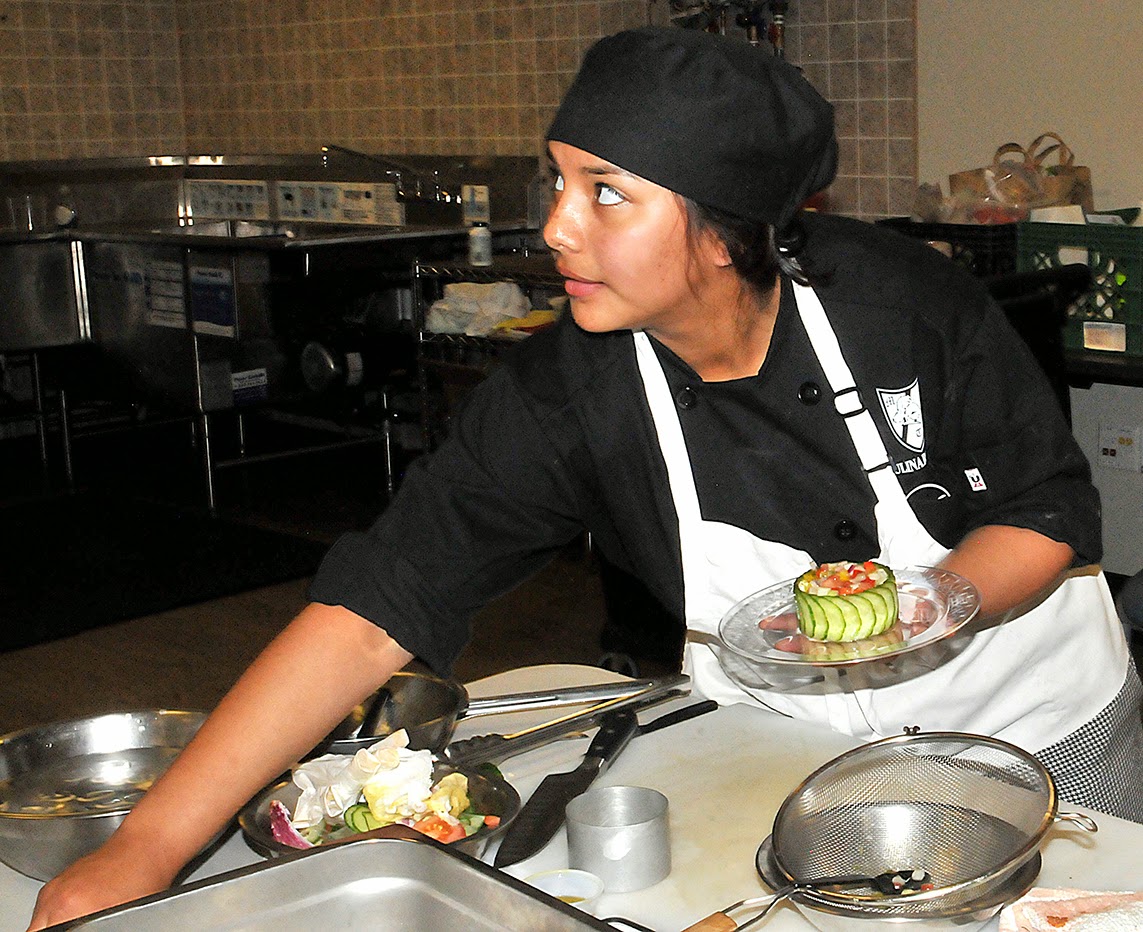Your culinary cravat adds a professional look to your coat and trousers. And, like a business or dress tie, it's a classic Windsor knot.
If you don't wear a tie every day, you'll want to practice this to be sure it's crisp and tight for a professional, pulled-together look.
Herewith, a lucid YouTube presentation from The Chef's Academy that should help you get a perfect know every time: www.youtube.com/watch?v=D_zqIYgTRUMThis is a very basic single-knot tie, but there is a trick, so we are also giving you a step-by-step written guide.(e-How helped with these instructions.)
Instructions
1) Fold the neckerchief in half diagonally to form a large
triangle. Press the triangle with a warm iron to get a crisp fold. Turn the
neckerchief so that the point is closest to you.
2)
Fold the point up toward
the long edge about 3 inches and flatten the fold.
3) Take the folded edge in
your hand and fold it over again about 3 inches. Continue folding in this
manner until you are about 2 to 3 inches from the long edge of the neckerchief.
4)
Fold the long edge down
to meet the top fold, and continue folding up as before. This ensures a neat
finished edge on your cravat.
5) Iron the folded
neckerchief to obtain a clean, professional look.
6)
Place the neckerchief
around your neck, arranging the midpoint at the center of the back of your
neck. Pull the ends over your shoulders and adjust the ends as necessary so
they are even.
7) Cross the left end of the
neckerchief over the right end, and bring the left end up and through the part
that is around your neck.
8)
Cross the right end of
the neckerchief over the left end, and pull the right end through to make a
knot.
9)
Pull both ends to tighten
the knot, making sure the ends are the same length.
10)
Arrange the neckerchief
by gently tugging the knot so that it is centered at the front of your neck.
11)
Tuck the ends inside the
front of your chef's coat to finish the look.


















































